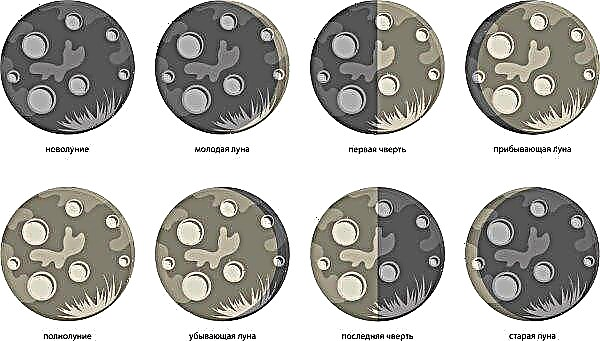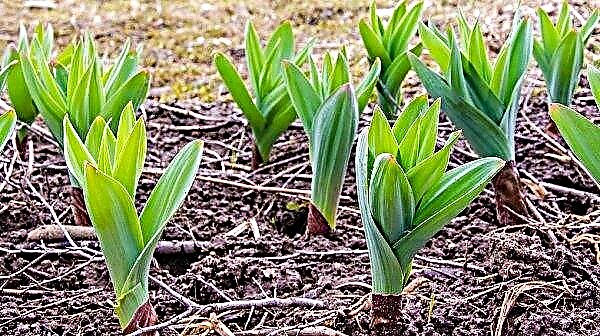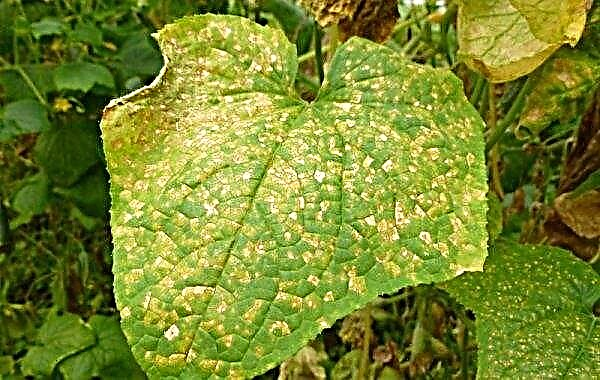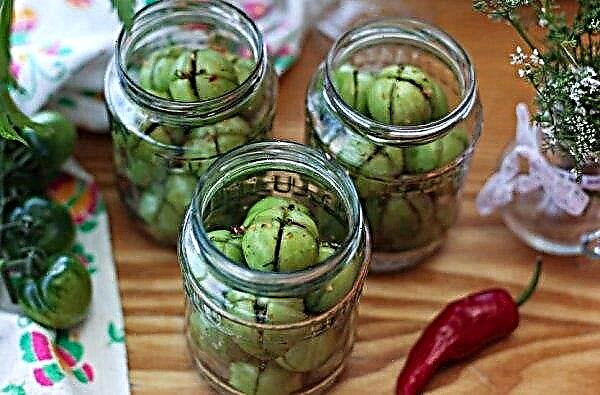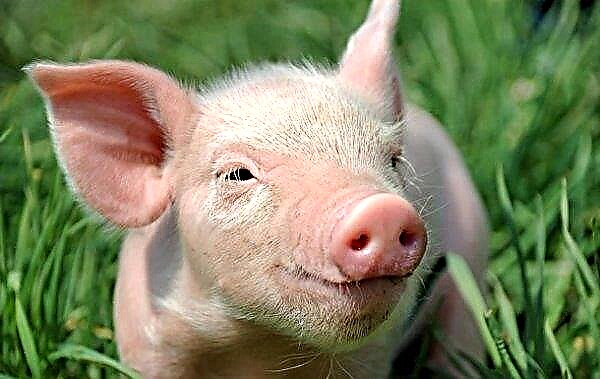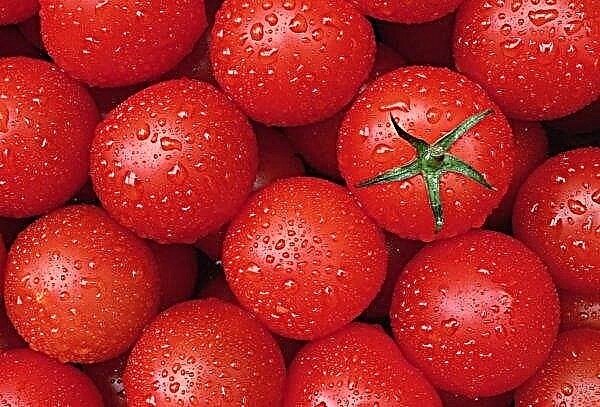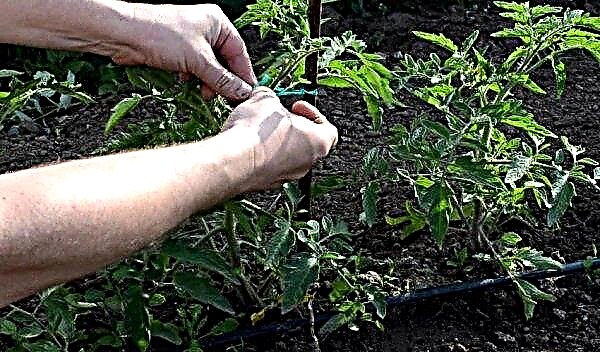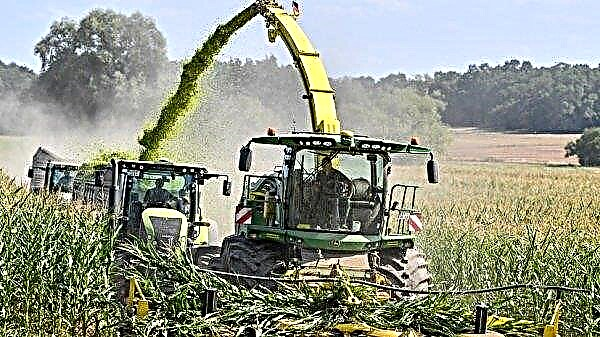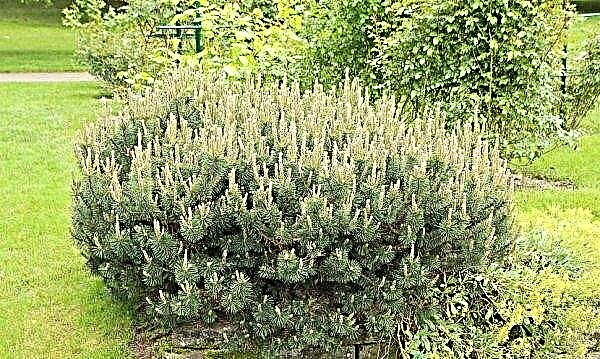The potato variety of the Belarusian selection of Scarb is very popular in its homeland. Among Belarusians, it occupies up to 30% of all areas with this culture. We will get acquainted with the description and characteristics of the Scarb variety, how it should be planted and grown, harvested and stored.
Description and characteristics of the variety
The variety was obtained by breeders at the Scientific and Practical Center of the National Academy of Sciences of Belarus for Potato and Horticulture in 1997. After 5 years, he was included in the State Register of the Russian Federation. The variety can be grown both in private households and on an industrial scale.
It has an average harvest maturity. It forms medium-sized bushes with dark green foliage, blooming with white flowers. Leaves of medium size, with almost no waviness.
From 10 to 14 oval or rounded oval potatoes weighing 90-200 g are formed under each bush. They have a dense yellow skin and yellow flesh. The surface of root crops is smooth with small eyes. The marketability of root crops is on average 91%. Tubers have a long shelf life and are well stored.Did you know? The exact date on which potato chips were invented is known - on August 24, 1853, a picky customer complained to cook George Krum that he sliced the fries too thick. The indignant Krum prepared this dish again, slicing the potatoes as thin as possible.
Taste qualities
Skarb potatoes are tasty and well peeled. The pulp does not darken, which makes the variety suitable for freezing. Tubers are poorly boiled during cooking, suitable for salads, chips, french fries, perfectly fried. The starch content is 10.8-17.7%.
Ripening dates and productivity
The time from emergence to harvest is 80–95 days. The productivity declared by producers is 650 centners per hectare, but the largest registered crop was 508 centners per hectare (Vologda Oblast). On average, it usually ranges from 250 to 410 kg / ha.
Advantages and disadvantages
- The Scarb potato variety is popular due to the following advantages:
- high productivity;
- good taste;
- presentation of root crops;
- featuring the ability to be stored;
- resistance to many diseases;
- unpretentiousness.
- The disadvantages include the following:
- instability to late blight and pests;
- uneven seedlings;
- the need to avoid spring waterlogging;
- medium drought tolerance.
Planting and growing varieties
Attention should be paid to the proper planting of potatoes and the preparation of a site for it.
Optimal landing times
When landing, you should focus on the weather. The soil should be warmed up at least +7 ... + 9 ° С at a depth of 10-12 cm, and the average daily air temperature should not be lower than + 8 ° С. Typically, these weather conditions are set in early May.
Skarb tubers do not tolerate spring waterlogging of the earth. If it rains and the soil has not warmed enough, then it is better not to rush with planting.
Preparing planting material
Potato tubers should begin to be prepared for planting 25 days before the intended planting in the ground. For this, planting material is selected and healthy and unaffected specimens are selected for planting. 3
Then the selected tubers are sprouted - placed in wooden boxes and transferred to a warm room. It is recommended to periodically spray them with water. The temperature can be reduced to + 10 ° C. The day before planting, the seed is disinfected with a weak solution of potassium permanganate or copper sulphate for the prevention of diseases.Important! A feature of Skarb potato tubers is that they cannot be cut in half for cultivation. The productivity of such halves will be low.
Site preparation
For planting potatoes, you should choose a place well lit by the sun, where potatoes and other solanaceous crops did not grow before. Since the autumn, all weed grass has been removed from it, organic matter (manure, humus, droppings) is introduced and shovels are dug up on a bayonet before frost.
Together with organic fertilizers, mineral fertilizers can be added - 40 g of superphosphate and 15 g of potassium sulfate for every 1 m² of beds. In the spring, it is enough to dig the soil into half a bayonet of a shovel. Well-drained loose soils can be simply loosened with a pitchfork. Alternatively, you can plant green manure, and in the spring they can be mowed and sprinkled with soil.
Light nutritious soils with a slightly acidic or neutral reaction are good for potatoes. Loamy, loamy, chernozems and peat are suitable. Too acidic soils are alkalized with bone meal or ash, alkaline soils are acidified by the addition of peat or manure. Peat, humus from straw, turf, sand contribute to heavy clay soil.
Landing rules
Planting pattern is largely dependent on soil quality. Potatoes are buried in light fertile soils by 10–12 cm with a distance between holes 60 × 25–30 cm. On loams and heavy fertile soils, they are planted to a depth of 8–10 cm.
They do not bury more than 5–6 cm of clay soil, and the distance between the holes is 70 × 30–35 cm. It is recommended to pour a little ash into the holes when planting.
Care Features
As soon as the shoots appear, it is necessary to do the hilling of the bushes and loosen the aisles. In Skarb potatoes, root crops are formed close to the surface, so the plant needs to be spudded at least three times over the entire growing period. Periodically, weeding is necessary, combining this process with loosening.
Watering is carried out depending on weather conditions. During the formation of tubers, it is made once every 10 days, and if the weather is hot, then every 3-5 days. 2-3 weeks before digging tubers, watering is stopped. The Skarb potato variety responds very well to a high agricultural background.
Top dressing is done 3 times during the growing season:Important! The soil needs to be earthed and loosened to a shallow depth, since the Skarb variety has a slight deepening of the root system.
- when shoots appear;
- during budding;
- when the plant bloomed.
 At the second application, it is necessary to pay attention to phosphorus-potassium top dressing - dissolve 15 g of potassium sulfate, 15 g of superphosphate and ½ cup of ash in a 10-liter bucket of water. During the third feeding, a solution is made of 30 g of superphosphate and a glass of mullein in a 10-liter container with water. Under each bush, 0.5 liters of these top dressings are poured.
At the second application, it is necessary to pay attention to phosphorus-potassium top dressing - dissolve 15 g of potassium sulfate, 15 g of superphosphate and ½ cup of ash in a 10-liter bucket of water. During the third feeding, a solution is made of 30 g of superphosphate and a glass of mullein in a 10-liter container with water. Under each bush, 0.5 liters of these top dressings are poured.Foliar top dressing gives a good result. The first top dressing is carried out 14 days after the emergence of seedlings. Then fertilizers are applied at intervals of 2 weeks. The spray solution consists of 5 g of boric acid, 100 g of urea, 150 g of potassium monophosphate dissolved in 5 l of liquid. The consumption rate is 1 liter per 1 m².
Diseases and pests of the variety
The variety is resistant to many diseases of potatoes, but can be affected by late blight. When the bushes are affected by late blight, brown spots appear on the leaves and stems.
As soon as the first signs of this disease are noticed, it is necessary to spray with a solution of copper sulfate or Bordeaux liquid. For the prevention of late blight, the bushes can be sprinkled with ash.
Root crops of this variety can be affected by ring rot. Symptoms of the disease are yellowing and twisting of foliage. When a root crop is cut, brownish and yellow annular lesions are seen closer to the skin. There are no specific means to combat this ailment.
Prevention of the appearance of such a problem is the observance of crop rotation, processing and heating of planting material, as well as the introduction of potassium-nitrogen fertilizers to increase the immune system of root crops.Did you know? Potatoes first began to be cultivated about 9 thousand years ago in the territory of the modern South American state of Bolivia. There are still growing wild varieties of this culture.
Scarb potatoes may be affected by the following pests:
- Wireworm.These are yellowish-colored worms up to 5 cm long. For the prevention of their appearance, it is necessary to dig up the soil for the winter, weeding and liming. A good effect is obtained by treatment with chemical preparations of the Prestige, Karate type.

- Colorado beetle. You can collect beetles and their larvae by hand when planting in small summer cottages. For large plantings, spraying with chemical and biological agents is used: “Prestige”, “Tabu”, “Boverin”. 20 days before harvesting root crops, the use of chemicals for processing should be discontinued.

- Bear To exclude the appearance of these insects, Medvetox is used. The granules of such a chemical agent when planting root crops are sprinkled with holes, and then the entire plot. As this pest is detected in the summer, the pellets are reused.

Collection and storage of Scarb potatoes
Digging potatoes of this variety begin in the second half of September. 14 days before this process should be removed tops and stop watering. After the root crops are harvested, they must be dried, and then sorted out.
Damaged fruits (rotten, with cracks and damage) should be discarded, good specimens should be selected for planting in the spring and placed in a separate container. It is preferable to store root vegetables in boxes made of wood and plastic. It is best to choose a cellar that is ventilated as a storage location.Did you know? Europeans did not immediately recognize edible root crops in potatoes. His excellent palatability and nutritional qualities have been scientifically proven by the Frenchman Parmantier. Some French potato dishes are named after this agronomist.

The recommended temperature regime for storage is + 2 ... + 5 ° С. This variety has excellent keeping quality. It is well preserved throughout the year. The Scarb potato variety can produce very high yields, is resistant to many diseases of the potato and is well stored.




